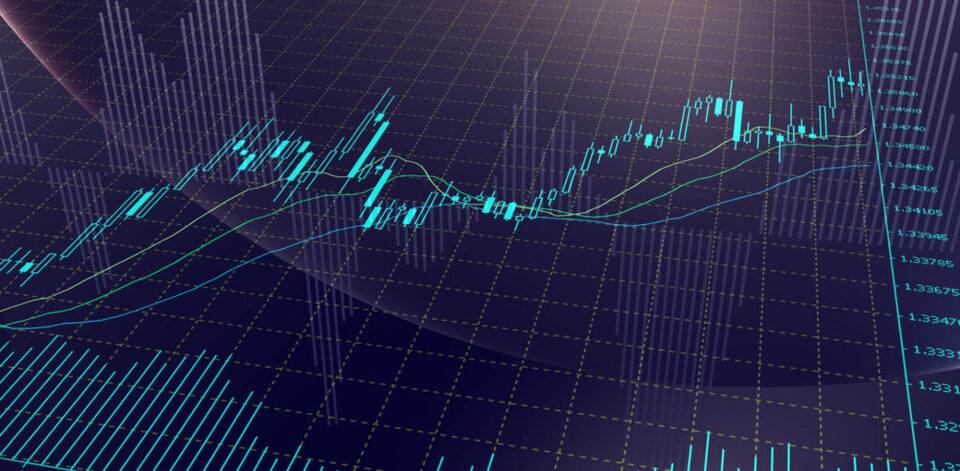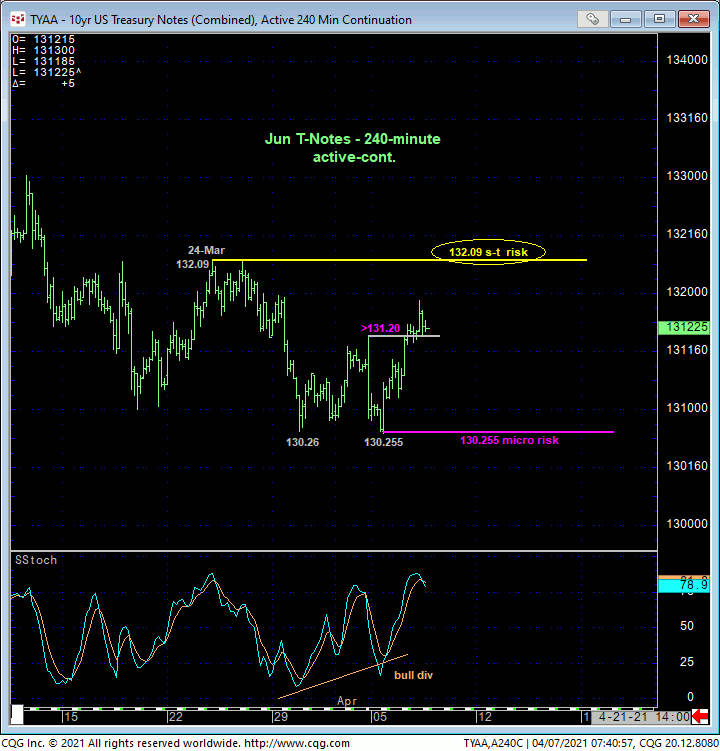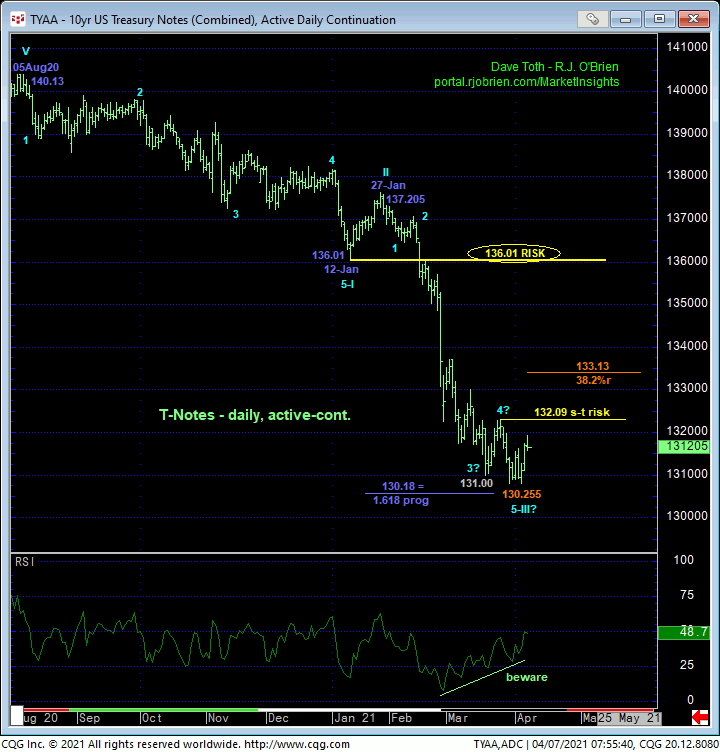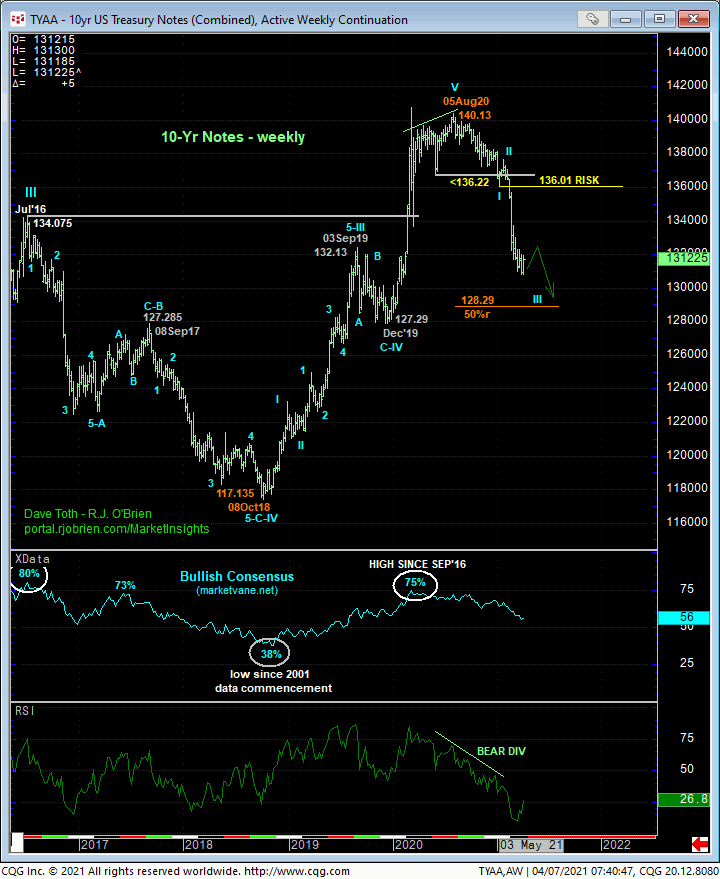
The market’s recovery yesterday above 02-Apr’s 131.20 micro corrective high confirms a bullish divergence in very, very short-term momentum. This mo failure leaves Mon’s 130.255 low in its wake as one of developing importance and a micro risk parameter from which shorter-term traders with tighter risk profiles can objectively base non-bearish decisions like short-covers and cautious bullish punts.


From a longer-term perspective however, it is clear that this micro mo failure is of an insufficient scale to break the major reversal and downtrend from 05Aug20’s 140.13 all-time high. However, smaller-degree strength is typically a precursor to larger-degree strength, and you can see from both the 240-min chart (top) and daily chart above that continued and relatively short-term strength above 24-Mar’s 132.09 corrective high and short-term but key risk parameter WILL confirm a bullish divergence in daily momentum, arrest the bear and expose what we believe will be a somewhat larger-degree (4th-Wave) correction of the portion of the bear from 27-Jan’s 137.205 high to Mon’s 130.255 low. And given the magnitude of this 137.205 – 130.255 decline, even a Fibonacci minimum 38.2% retrace doesn’t cut across until the 133.13-area.
You see a similar tiring of the major rise in rates from 04Aug20’s 0.504% low in the daily log close-only chart of 10-yr yields below. A close below 24-Mar’s 1.608% smaller-degree corrective low will confirm a similar but inverted bearish divergence in daily mo and expose a bigger correction of at least the late-Jan-to-late-Mar rise in rates.

On an even broader weekly scale below, the major peak/reversal count is in full swing ahead of what we believe could be a reversal in rates that could be generational in scope. Given the magnitude of this reversal, commensurately larger-degree strength above 12-Jan’s 136.01 (suspected 1st-Wave) low is required to jeopardize the impulsive integrity of a more immediate bearish count for long-term institutional players. The scale importance here is that the market’s upside corrective potential between 132.09 and 136.01 is indeterminable and wide open. So if you cannot accept the risk of a bearish policy to 136.01, you’d be advised to pare or neutralize bearish exposure on a recovery above 132.09 to circumvent the heights unknown of a then-expected larger-degree corrective rebound.
These issues considered, short-term traders with tighter risk profiles are advised to pare bearish exposure to more conservative levels and jettison remaining exposure altogether on further proof of strength above 132.09. Longer-term institutional players are advised to pare bearish exposure to more conservative levels on a recovery above 132.09. Needless to say, a relapse below 130.255 mitigates this interim base/correction count, reinstates the major bear and exposes potentially steep losses thereafter.


